The majority of Philly YIMBY’s attention is focused on development activity in the city of Philadelphia. This comes as no surprise, especially considering that more than 50 percent of new residential permits issued in 2021 in Pennsylvania were issued within the city limits. However, there is plenty of interesting activity happening in the surrounding communities, as well, just on a smaller scale. A variety of suburban towns and communities are densifying and building urban housing more resemblant of what is found within the city within whose orbit they lie. The Borough of Media is a prime example.
Media is a tight-knit, pedestrian-friendly town on the western edge of the greater Philadelphia metropolitan area situated around 11 miles west of Center City Philly, which boasts train and trolley connections to the city. Media has been largely “built-out” for decades, and there are very few parcels available for development. However, a surging interest in pedestrian-friendly communities and a dramatic rise in real estate values have resulted in various creative, small-scale projects that are increasing the available housing stock in the borough. A walk around the town provides three current examples.
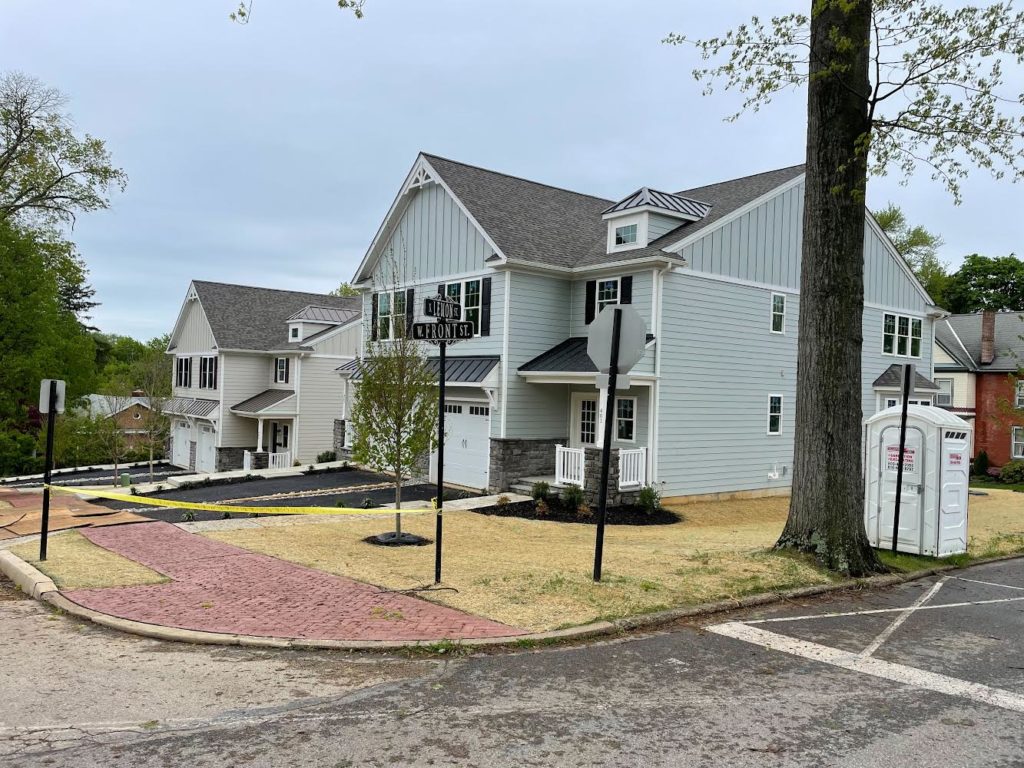
Set of new twins on West Front Street. Credit: Colin LeStourgeon.
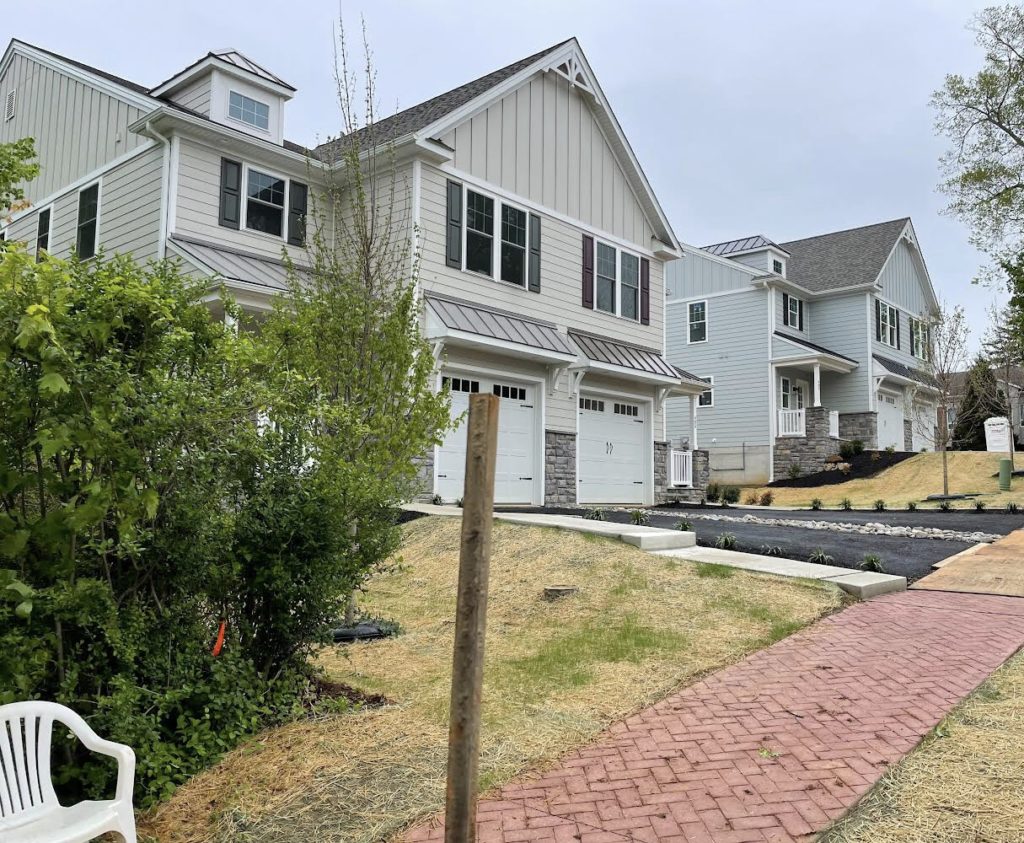
Set of new twins on West Front Street. Credit: Colin LeStourgeon.
On West Front Street, four twin homes are nearing completion. These homes are situated within two blocks of the restaurants, bars, and cafes of State Street, the town’s main commercial thoroughfare. The exteriors feature a rather simple design, consisting largely of either tan or blue siding below a triangular roofline. Single-car garages take up a fair portion of each façade on the ground floor.
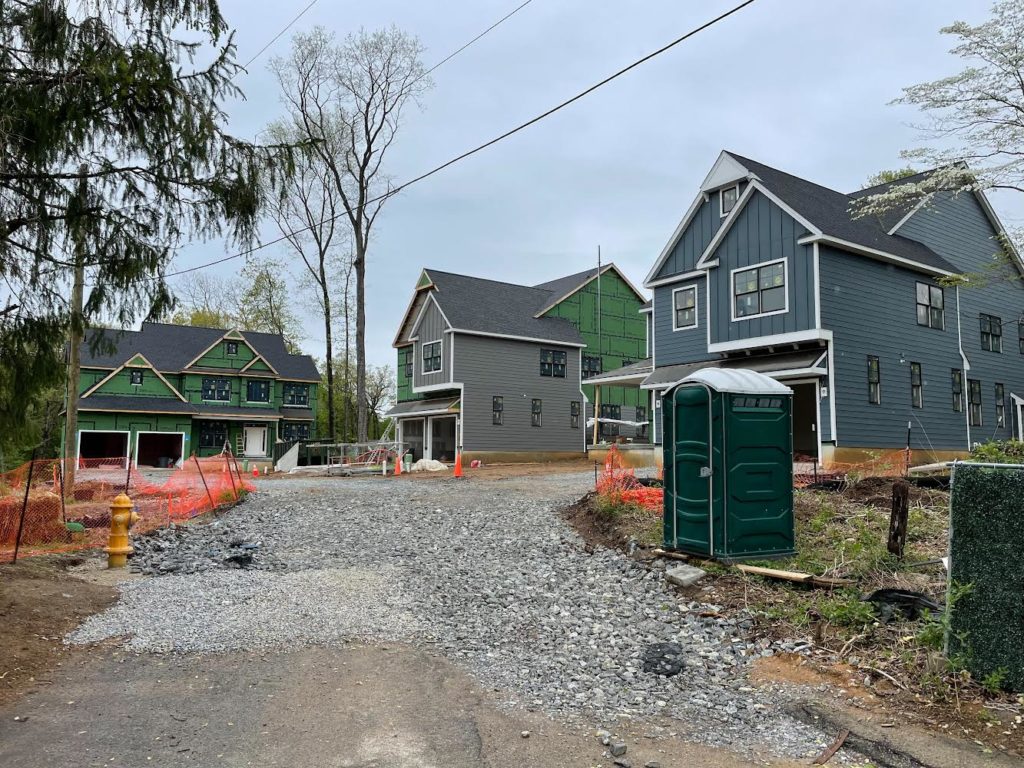
“Media Walk.” Credit: Colin LeStourgeon.
Further north is “Media Walk” at 6th Street. Here, there are four single family homes under construction on land that previously held one home. Real estate listing for the homes sets the price points at $1.49m. The homes rise on a site formerly known as “Centennial Woods,” for its leafy setting. A previous proposal for 11 townhomes occupying a smaller portion of the property was rejected by the surrounding community.
These homes also feature rather plain exteriors, with few details venturing past the front building faces. Siding is arranged vertically at the front, before transitioning into the more typical horizontal design that is more common among new development past the home fronts.
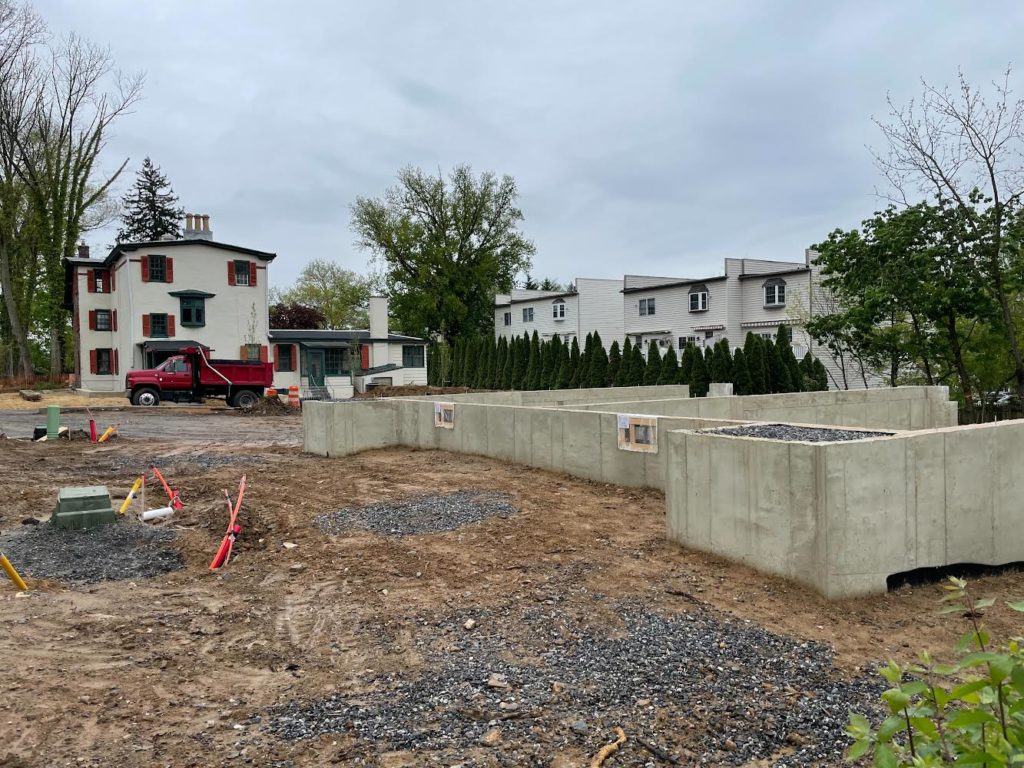
New homes along Providence Road. Credit; Colin LeStourgeon.
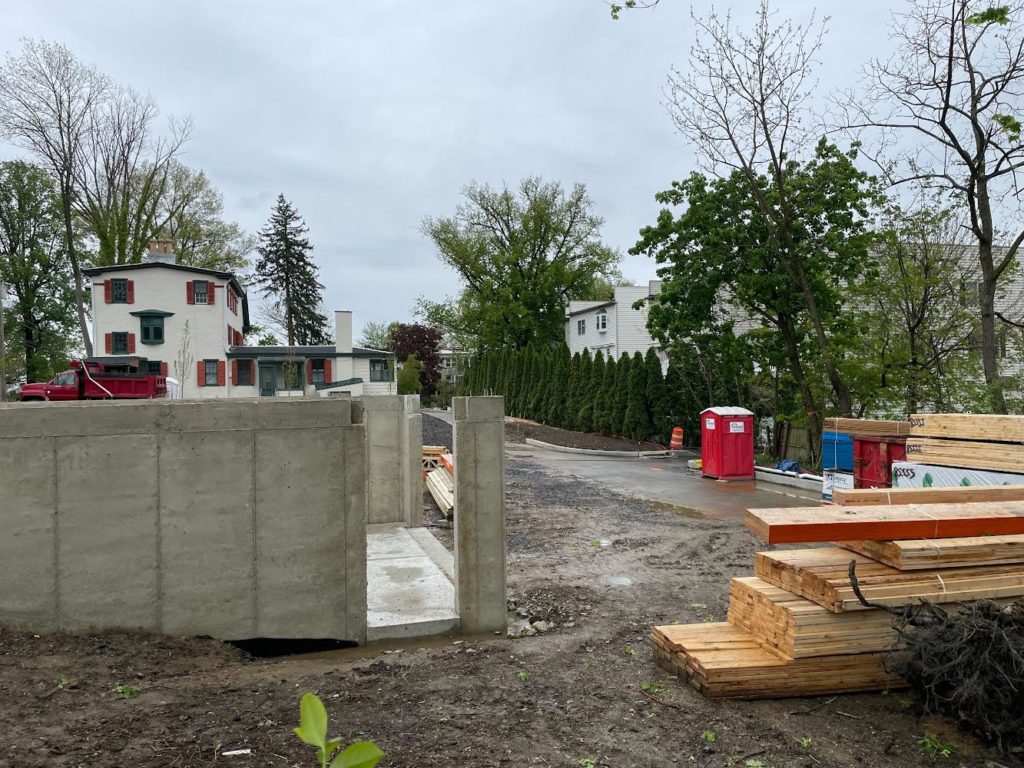
New homes along Providence Road. Credit; Colin LeStourgeon.
Over on Providence Road, a historical house has been recently renovated and restored. The building served as a General Store from 1839 to 1856. The surrounding property is being developed with twins and single-family homes. Restoration work on the historic home can be seen as well as the foundation work on the surrounding new units. Pricing for the new construction units appears to be north of $1 million.
No renderings are readily accessible for the homes, although they will likely retain similar designs to the above listed developments.
In some ways, these new homes are not all positive. Media has historically been a town whose residents spanned the entire socioeconomic scale, which is a characteristic that is not found in every community. This diversity is reflected in the housing stock, which ranges from grand Victorian and eccentric single family homes, to standard twins, to the common apartment. However, real estate prices have steadily grown along with the demand for pedestrian-friendly living, and this has put pressure on the affordability of the town. There are growing concerns that the blended socioeconomic mix of the town may be threatened.
An easy solution to issues such as this would be to simply construct more housing, following the basic concept of supply and demand. However, many residents of the town fear that this scale of development could drastically change the look, feel, and overall characteristic of the town, which has slowed the addition of more housing. Moving forward, towns such as Media should strive to add more residential space surrounding vital commercial corridors such as State Street, as well as along transit lines, which Media has no shortage of. The Route 101 trolley runs on State Street toward Upper Darby, where connections to the Norristown High Speed Line and Market-Frankford Line can be made. Media also has its own station along regional rail, providing direct access to major destinations such as University City, Center City, and Temple University.
As the desire for walkable towns remains at an all-time high, the importance for more housing in these areas follows in proportion.
Subscribe to YIMBY’s daily e-mail
Follow YIMBYgram for real-time photo updates
Like YIMBY on Facebook
Follow YIMBY’s Twitter for the latest in YIMBYnews



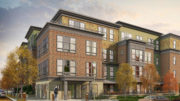
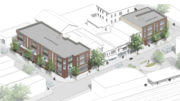
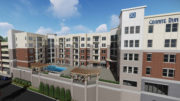
When did the Media trolley get red?! They were white.
Looks like this red trolley has advertising put on it. SEPTA now sells advertising put on it’s buses.
I think they’ve done it up to resemble an old Red Arrow car.
Responding to Susan Mandeville’s inquiry above, the SEPTA stock photo shows trolley car number 101 (SEPTA has a fleet of 29 trolleys numbered 100 to 128 which run on the Media Route 101 and Sharon Hill Route 102 lines) running by the Media Theatre on State Street probably sometime in 2013. From approximately April 2013 to April 2014, SEPTA wrapped trolley car #101 in red coloration and appropriate lettering and markings for a one-year period to commemorate the 100th birthday of the Media Trolley Line. SEPTA’s Route 101 was the last trolley line built by the Philadelphia and West Chester Traction Company and went into service on April 1, 1913. Car #101 was decorated to look like the first trolleys did when they rolled out on that line on that day. Media holds the distinction of being the last suburban town in America with a trolley running down its main street.